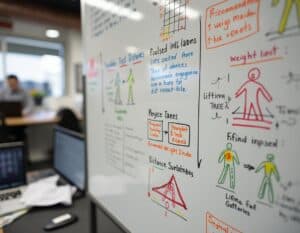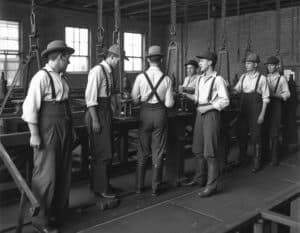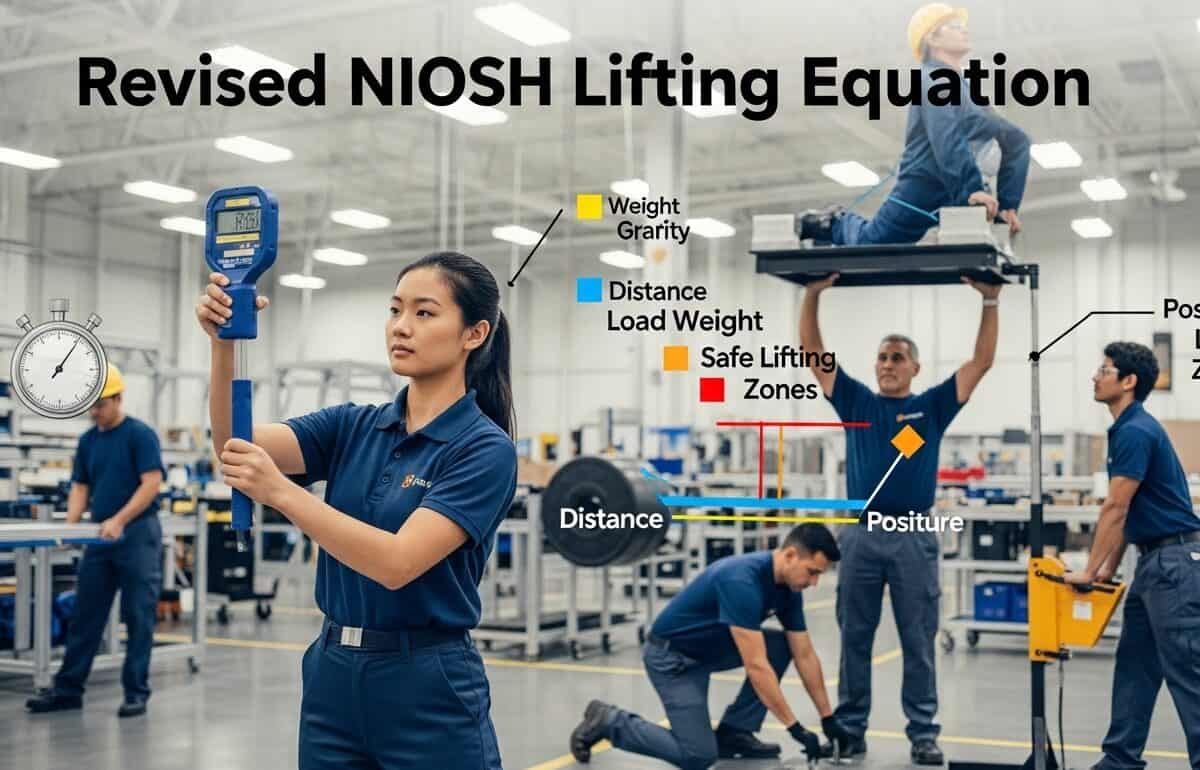Overexertion injuries account for approximately 33% of all worker injuries, highlighting the need for effective lifting assessment tools such as the Revised NIOSH Lifting Equation. This comprehensive article will detail into the purpose and background of this equation, breaking down its individual components to provide a clearer understanding of how it enhances safety across varied industries such as تصنيع, healthcare, and construction. Readers will gain insights into data collection and measurement techniques for accurate assessments, how to calculate the Recommended Weight Limit (RWL), and the importance of the Lifting Index (LI) in risk assessment. We also will discuss implementing مريح controls and redesigning tasks to elevate workplace safety, while also addressing the limitations and scope of this equation in practical applications.
النقاط الرئيسية

- Revised NIOSH equation improves assessment of two-handed lifting tasks.
- Key components include weight, distance, and posture.
- Accurate data collection enhances lifting evaluations.
- RWL calculation ensures safe lifting limits per task.
- Lifting Index indicates risk levels for workers.
- Task redesign and flows redesign is a must to mitigate ergonomic risks effectively.
About the NIOSH Institute
The National Institute for Occupational Safety and Health (NIOSH) is a federal agency in the United States that focuses on researching and providing recommendations to avert work-related injuries, illnesses, and fatalities. Established under the Occupational Safety and Health Act of 1970, NIOSH operates as part of the Centers for Disease Control and Prevention (CDC) and is dedicated to ensuring safe and healthy working environments for all employees. The agency generates new insights in occupational safety and health and applies this knowledge to enhance worker protection. NIOSH employs a diverse team of over 1,300 professionals, including specialists in areas such as epidemiology, medicine, industrial hygiene, and safety.
Background of the NIOSH Equation

The Revised NIOSH Lifting Equation was developed to provide a scientifically grounded method for evaluating and predicting the risk of injury associated with manual lifting tasks in various work environments. This evolution reflects advancements in ergonomic research, emphasizing not only the weight lifted but also factors such as lifting height, distance, frequency, and duration.
Prior to the revision, the original NIOSH Lifting Equation was often criticized for its oversimplification of lifting tasks. The updated equation addresses this by including an array of variables that affect lifting conditions, thus enhancing the predictive accuracy of potential risk.
Utilizing this comprehensive approach has been shown to reduce workplace injuries by as much as 25% in industries that implement ergonomic assessments based on this equation.
نصيحة: conducting a thorough ergonomic assessment using the Revised NIOSH Lifting Equation before implementing lifting tasks can significantly mitigate injury risks and enhance worker efficiency.
The Revised NIOSH (National Institute for Occupational Safety and Health) Lifting Equation is a tool used to assess the risk of low back injuries associated with two-handed manual lifting tasks.
The equation calculates the Recommended Weight Limit (RWL), which is the maximum weight that most healthy workers can lift over an 8-hour shift without increasing their risk of musculoskeletal disorders of the lower back.
The Equation and its Components
The Revised NIOSH Lifting Equation provides a formula for calculating the recommended weight limit (RWL) for 2-handed lifting tasks كما the primary output of the equation. The equation incorporates multiple factors that influence lifting capacity, enabling further precision in ergonomic assessments. The basic formula for RWL is defined as follows:
The equation is as follows: [latex]RWL = LC*HM*VM*DM*AM*FM*CM[/latex]
A related metric is the Lifting Index (LI): it is the ratio of the actual weight lifted to the RWL. A Lifting Index of 1.0 or less is considered safe.
The value of each multiplier ranges from 0 to 1 and is determined using tables that correspond to the measured value of each variable. Here is a breakdown of each parameter in the equation:
| المعلمة | وصف | Units |
LC Load Constant | This is the maximum recommended weight for lifting under ideal conditions. | 23 kg (or 51 lbs) |
HM Horizontal Multiplier | This factor accounts for the horizontal distance of the hands from the midpoint between the ankles: the horizontal distance (H) is the distance from the point projected on the floor directly below the midpoint of the hands grasping the object, to the midpoint of the ankles. | The horizontal distance (H) is measured in centimeters. |
VM Vertical Multiplier | This factor is determined by the vertical height of the hands from the floor at the start of the lift. | The vertical distance (V) is measured in centimeters. |
DM Distance Multiplier | This multiplier accounts for the vertical distance the load travels during the lift, i.e. the vertical distance the hands move between the start and end of the lift. | The vertical travel distance (D) is measured in centimeters. |
AM Asymmetric Multiplier | This factor is determined by the degree of twisting or turning of the body during the lift: The asymmetry angle (A) is the angle between the asymmetry line and the sagittal line. The asymmetry line is the horizontal line that joins the midpoint between the ankles and the point projected on the floor directly below the midpoint of the hands grasping the object. The sagittal line is the line going through the midpoint between the ankles and extending straight forward from the body. | The angle of asymmetry (A) is measured in degrees. |
FM Frequency Multiplier | This factor accounts for the frequency of lifting, including the number of lifts per minute and the duration of the lifting task.The lifting frequency (F) is the average number of lifts per minute over a 15-minute period. | This is determined by the number of lifts per minute and the duration of the work in hours. |
CM Coupling Multiplier | This multiplier assesses the quality of the hand-to-object grip (coupling). The coupling quality is determined by the type of grip, surface, shape and size on the object. A “good” coupling has handles or cut-outs, a “fair” coupling might involve gripping a box with no handles, and a “poor” coupling would be an awkward, bulky, or slippery object. | The quality of the grip is classified as “good,” “fair,” or “poor”. |
The NIOSH ratio to use
Horizontal Multiplier (HM):
| H = Horizontal Distance (cm) | HM Factor |
|---|---|
| 25 or less | 1.00 |
| 30 | 0.83 |
| 40 | 0.63 |
| 50 | 0.50 |
| 60 | 0.42 |
Vertical Multiplier (VM):
| V = Starting Height (cm) | VM Factor |
|---|---|
| 0 | 0.78 |
| 30 | 0.87 |
| 50 | 0.93 |
| 70 | 0.99 |
| 100 | 0.93 |
| 150 | 0.78 |
| 175 | 0.70 |
| >175 | 0.00 |
Distance Multiplier (DM):
| D = Lifting Distance (cm) | DM Factor |
| 25 or less | 1.00 |
| 40 | 0.93 |
| 55 | 0.90 |
| 100 |
لقد قرأت 34% من المقال. الباقي لمجتمعنا. هل أنت عضو بالفعل؟ تسجيل الدخول مجتمع الابتكار العالمي تسجيل الدخول أو التسجيل (100% مجاناً) اطلع على بقية هذه المقالة وجميع المحتويات والأدوات الخاصة بالأعضاء فقط. فقط المهندسون والمصنعون والمصممون والمسوقون الحقيقيون المحترفون. الأسئلة الشائعةWhat is the purpose of the Revised NIOSH Lifting Equation?The Revised NIOSH Lifting Equation is a tool used to assess the risk of back injuries from lifting tasks. It establishes safe lifting limits, known as the Recommended Weight Limit (RWL), to prevent work-related musculoskeletal disorders. The equation also serves as a guide for designing and improving the safety of manual lifting tasks in the workplace. How is the Recommended Weight Limit (RWL) calculated?The calculated RWL provides a guideline for the maximum weight a worker should handle to minimize injury risk.The Recommended Weight Limit (RWL) is calculated by multiplying a load constant by six different multipliers. These multipliers represent various risk factors associated with lifting, such as the horizontal and vertical distance of the lift, the frequency of lifting, and the asymmetry of the lift. What is the Lifting Index (LI) and how is it used in risk assessment?The Lifting Index (LI) is a tool that provides a relative estimate of the level of physical الإجهاد and risk of injury associated with a manual lifting task. It is calculated by dividing the actual weight of the object being lifted by the Recommended Weight Limit (RWL). A Lifting Index value of 1.0 or less is considered safe, while a value greater than 1.0 indicates an increased risk for some workers, with the risk of injury growing as the LI value increases. What are the limitations and scope of the Revised NIOSH Lifting Equation?The Revised NIOSH Lifting Equation has a specific scope and several limitations: it is designed to assess the risk of two-handed lifting tasks, but does not apply to one-handed lifts, lifting while seated or kneeling, or carrying, pushing, and pulling. The equation assumes that lifting is the primary work activity and does not account for other significant energy expenditures. Additionally, the equation is not applicable in environments with unfavorable temperatures or humidity, and it does not consider individual worker characteristics or environmental factors. قراءات ذات صلة
External Links on Revised NIOSH Equationالمعايير الدولية(حرك الرابط لرؤية وصفنا للمحتوى) مسرد المصطلحات المستخدمةContract Manufacturer (CM): شركة تُنتج سلعًا نيابةً عن شركة أخرى، وعادةً ما تتبع مواصفات تصميم وجودة محددة. يتيح هذا الترتيب للشركة المُوظِّفة التركيز على كفاءاتها الأساسية، كالتسويق وتطوير المنتجات، مع الاستعانة بمصادر خارجية لعمليات التصنيع.
{% إذا كانت الصورة المميزة والصورة المميزة != "" %}
{{العنوان}} {% إذا كان المقتطف %}{{ مقتطفات | truncatewords: 55 }} {% endif %} |













منشورات ذات صلة
أحدث المنشورات وبراءات الاختراع عن البيروفسكايت
أحدث المنشورات وبراءات الاختراع عن الجرافين
أكثر من 45 حيلة علمية للألعاب والتسويق: حيل تعتمد على البيانات والإحصائية
استخدام أو إساءة استخدام 25 تحيزًا إدراكيًا في تصميم المنتجات وتصنيعها
الشبكة المظلمة مقابل الشبكة المظلمة مقابل الشبكة العميقة 101 والمزيد
أحدث المنشورات وبراءات الاختراع حول الأتمتة الخلوية